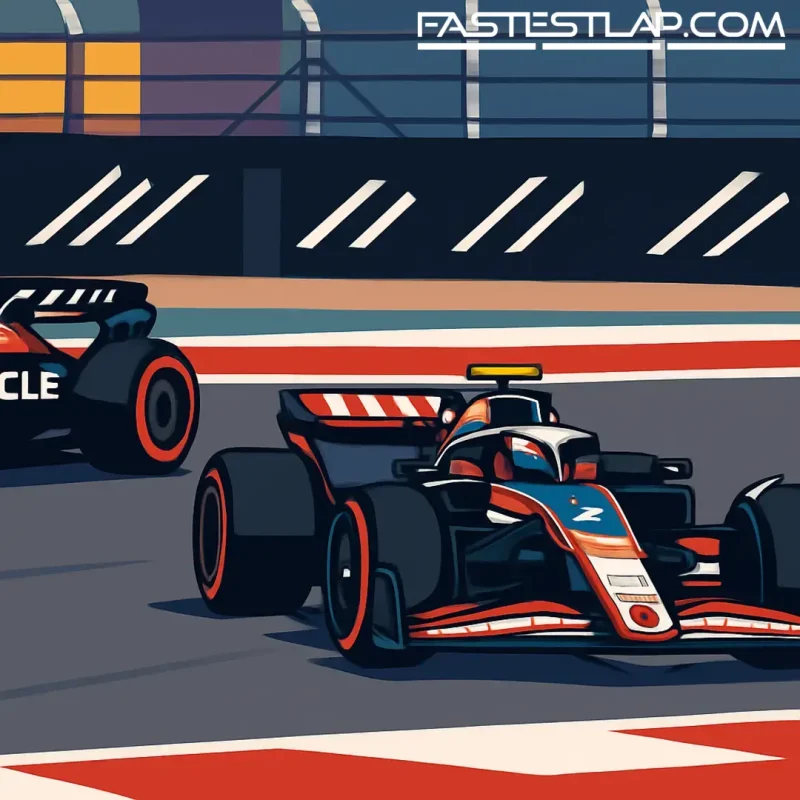‘This is not the way we go racing’: Bearman slams Tsunoda’s COTA defending after near-miss
Oliver Bearman left Austin with points and a simmering grievance, accusing Yuki Tsunoda of “dangerous” and “desperate” defending after a hairy exchange at Turn 15 that sent the Haas rookie skating across the grass.
The flashpoint arrived as Bearman lunged for position late on at the United States Grand Prix. Tsunoda, holding the place in the Red Bull, covered the inside. Bearman dived, found the space closing, and bailed — straight over the runoff before looping into a spin. He recovered to ninth; Tsunoda pressed on to seventh.
“He went left in the braking,” Bearman said afterwards, arguing Tsunoda moved as he committed. “There was a space when I committed and then there wasn’t once I was getting closer. He braked and he moved… This is not the way we go racing.”
COTA’s Turn 15 isn’t a textbook stop-and-square corner; drivers angle in from a long arc, reading each other’s intentions at the last split-second. Bearman’s contention was that Tsunoda wasn’t just defending hard — he was reacting under braking and not leaving a car’s width, a combination the Briton believes crosses a line.
“He was swirling all over the place for a few laps,” Bearman added. “When I finally did stick my nose in and attempt the move, he moved in reaction. It could have caused a huge crash, honestly, without my quick avoidance.”
It capped a combative weekend from Tsunoda, who also clashed with Liam Lawson — first verbally in Sprint qualifying and qualifying, then physically at Turn 1 in the Sprint — before playing the lead role in Sunday’s post-race debrief. With Red Bull’s 2026 driver call hanging in the near future, Bearman didn’t resist the wider inference.
“I’ve seen the way Yuki has been driving this weekend,” he said. “In the Sprint he sent it up the inside in Turn 1 and took out his sister car. He did the same thing in Turn 1 again. So I feel like [he’s] driving maybe a little bit desperate, and that was shown in his defence.”
Tsunoda, for his part, wasn’t having it. He rejected the claim he’d moved under braking and framed the tussle as exactly the sort of elbows-out fight fans turn up for.
“I don’t think I moved under braking,” he said. “It’s just a bit unfortunate how we ended up like that, especially as we were having a good fight until then. That’s racing, right? I was fully in control, I didn’t have any lockups, and I was literally side-by-side. I’m not his teammate, I’m just fighting to be in the top 10 or more, so yeah, I thought that was OK.”
The two versions tell an old F1 story: where does firm become foul? Drivers and stewards have tiptoed around the grey area of reactionary moves for years. One change of line is permitted; reacting under braking is not. The trick is proving intent in a corner that bends, funnels and rewards opportunists.
Bearman also hinted this isn’t a one-off in the pack when Tsunoda’s involved, suggesting there’s a pattern with others too: “I feel like he has this issue with other drivers. Even when he was fighting against Charles [Leclerc], who is not even in the race with him — why are you defending from him? It just seems silly.”
Beyond the acrimony, the scoreboard will quietly suit both camps: Tsunoda banked solid points on a day Red Bull’s sharper end did Red Bull things, while Bearman salvaged more evidence of why Haas trust him to take big swings when the moment opens.
Whether the stewards feel invited to weigh in more heavily next time this happens is another matter. You can’t police intent, but you can set a tone. And right now the tone, at least from the Haas garage, is pretty clear: leave room, pick a line, and stick to it.
As for Tsunoda, he’ll point to the result and his conviction that he kept it within the letter — and the spirit — of the fight. The rest of the paddock will debate the margins. It’s Austin; the elbows were always coming out. The question heading into the final stretch is whether the next duel between these two ends in more quotes, or carbon.




